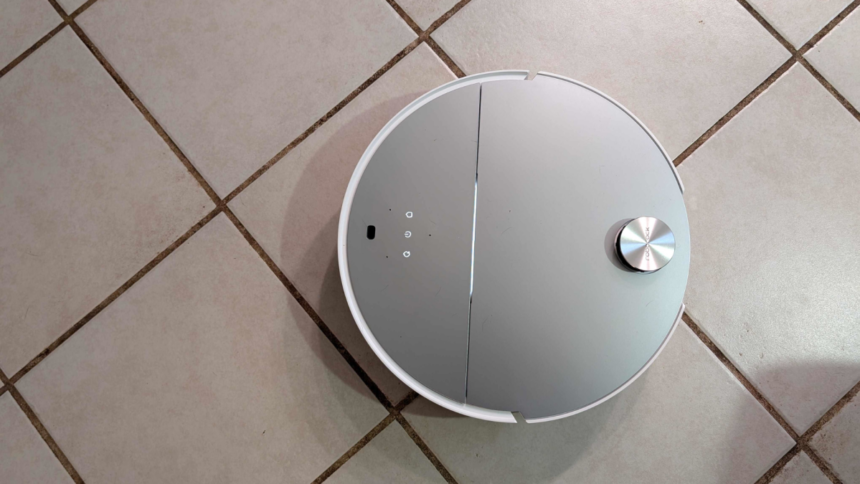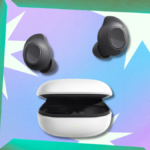Roborock’s New Frontier: The Saros 10 Robot Vacuum
During this year’s Consumer Electronics Show (CES), Roborock unveiled a fresh naming scheme for their premium vacuum robots, now branded as SAROS. It’s noteworthy that SAROS does not stand for any particular phrase. Among the lineup, the spotlight was on the innovative Saros Z70, boasting a unique “arm” capable of lifting objects. Additionally, they introduced two other models – the Saros 10 and Saros 10r. After using the Saros 10 at home for several weeks, it’s clear that it encapsulates the promising future of robotic vacuum technology with numerous features showcased at CES.
Overall, the Saros 10 has impressed; it stands out as the evolution of the S8 series from Roborock, integrating various enhancements. While I found it markedly superior to many other robot vacuums tested recently, it still didn’t surpass some of the existing models from Roborock.
Elegant Metal Design of the Saros 10
In its recent creations, Roborock has transitioned from the conventional black or white molded plastic with metal details to a more advanced aesthetic. The latest model, the Saros 10, showcases a sleek design with polished metal and creatively curved accents in white or black. Unlike competitors, whose charging docks resemble towering skyscrapers, Roborock maintains a low-profile dock design, making it easier to fit in tighter spaces beneath furniture.

Inside the Saros 10, there are two tanks for dirty and clean water, each capable of holding approximately four liters. The vacuum bag compartment and the cleaning solution dock are located behind an easily accessible panel on the front of the dock. One of the best features is its compatibility with any cleaning solution you choose, eliminating the need for proprietary cartridges, although Roborock suggests opting for their specific products.
The Saros 10 is more compact compared to previous models, allowing it to slip under low furniture effortlessly, including the mid-section of a slightly sagging couch.
Innovative Retractable LiDAR System
The slim design of the Saros 10 stems from its new approach to LiDAR technology. Traditionally, robot vacuums needed a small elevating LiDAR tower, which contributed to their height. The Saros 10 cleverly incorporates a retractable tower that can lower when navigating tight spots, relying on onboard cameras, lights, and artificial intelligence instead.
This shift is part of a broader trend among robotic vacuums, which are increasingly utilizing AI and advanced vision systems to comprehend their surroundings better. While Roborock utilizes various branded terminologies for its navigation system, the bottom line is that the Saros 10 functions exceptionally well in low-light settings and tight areas, reducing the likelihood of it becoming stuck.
Excellent User Experience with the Roborock App
The Saros 10 comes ready to use right out of the box—just plug it in, dock it, and scan the QR code on the unit to connect to the app. After filling the water tank, it embarked on its first cleaning journey.
During this initial run, utilizing the enhanced vision capabilities, the robot created a remarkably detailed map of the area, far surpassing the basic layout typically generated by conventional LiDAR systems. The Saros 10’s comprehensive analysis allowed for precise recognition of furniture, rugs, and cords within the app, providing a unique advantage in cleaning zone creation and obstacle interaction. This meticulous mapping ensures that different surfaces receive the appropriate cleaning pressure—essential for effectively managing various floor types.

Additional features within the app are worth noting, including the pin-and-go option that allows you to mark specific areas for cleaning and a remote-control capability that lets you navigate the vacuum manually.
Does More Suction Mean Better Cleaning?
In conversations with the engineers responsible for the innovative robots unveiled during CES, many technical aspects were discussed that might seem mundane to the average consumer. For example, the new dual-pronged sweeping arm has been reengineered to enhance dust collection efficiency by moving closer to walls. The Saros 10 is also the first robot I’ve encountered employing a split roller design, aimed at minimizing hair entrapment.

The vacuum performs admirably across a range of surfaces, efficiently capturing debris from carpets and hard floors alike. However, compared to the earlier tested models like the Curv or the Narwal Freo Z, its performance seemed less impressive.
One particularly remarkable feature of the Saros 10 is its astonishing suction power of 22,000Pa—more than double the leading competitors. Nevertheless, the noticeable improvement in cleaning efficacy was minimal, as even industry experts acknowledge that such high numbers are often more about marketing than genuine performance. While this figure should not be disregarded in the selection process, it shouldn’t overshadow other crucial factors.
Reintroduction of the Mop Pad
The previous S8 and QRevo lines showcased distinct mop-based cleaning technologies. While the QRevo used two spinning pads, the S8 featured a single vibrating mop. Initially, preference went to the vibrating option for its efficiency. However, after testing the Saros 10 equipped with a vibrating mop for 30 minutes, the superiority of dual-action pads became apparent in effectively removing stubborn residues.
This is enhanced by two significant improvements: the application of 176° water continuously cleaning the mop pad, and the robot’s ability to tilt its front, effectively increasing pressure on the mop pad to optimize contact with the floor surface.
Saros 10’s Ceiling in Stair Navigation
Meanwhile, another competitor, Dreame, presented a “stair-climbing” robot at CES, albeit limited to two-inch heights. The Saros 10 doesn’t merely fail to scale stairs; it attempted to surmount some significant thresholds in my home. Unfortunately, while it showed a tendency to climb two-inch barriers, this capability resulted in it tumbling down a height that other robots merely navigated around instead.
While the chassis elevation isn’t intended for stair traversal yet, it assists the device in maneuvering over cords and other impediments. The AI showcases an eagerness to learn about its surroundings while operating in an environment where it can frequently fail.

The advantages of AI are becoming more evident with each use, as the vacuum grows increasingly adept at recognizing its environment.












